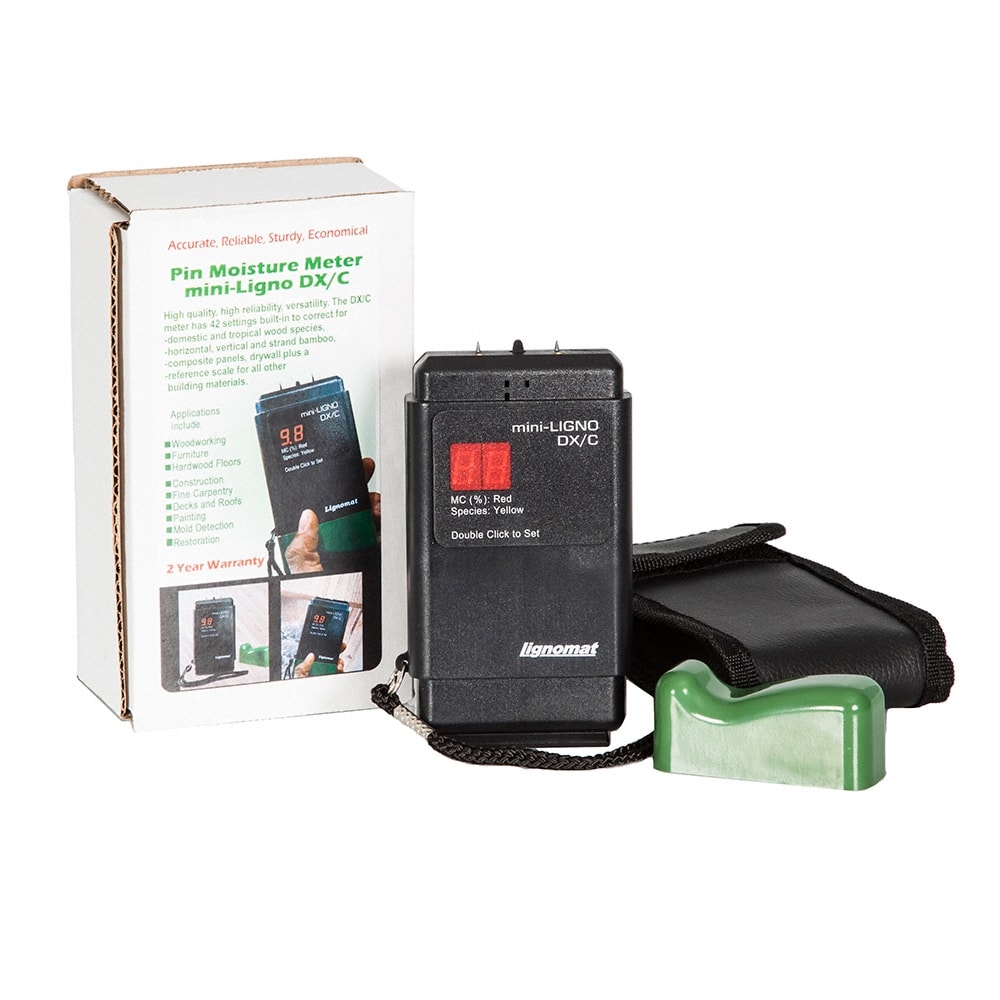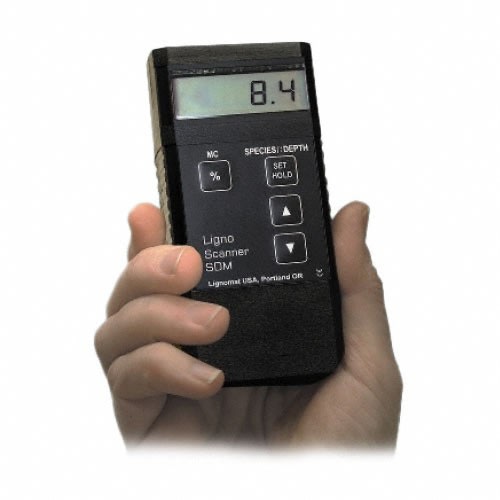- Home
- Education
- Installation Tips and Guides
- Wood Moisture Meter Tips & Information
Wood Moisture Meter Tips & Information
Wood Moisture Meter Tips & Information
Wood moisture meters are used to determine proper acclimation by measuring the wood flooring and the subflooring. These meters are also used to determine if wood subfloors and wood boards are "dry" or "wet". Wood moisture meters are used in inspections to determine the current presence of moisture.Two main types of meter used in the flooring industry are probe/pin meters and pinless meters.
Probe/Pin Meters
Pin meters measure electrical resistance across opposed sets of pins, which are pushed into the wood. Pin meters can measure moisture at different depth levels in the wood. They are also the most accurate wood moisture meter to use. These meters should have a species setting for domestic and exotic wood flooring. When measuring a solid wood board measure on the end grain on the short side or orient both pins in the same direction as the wood grain (1a).
1a ) low cost miniLigno moisture meter
1b.) Professional MeterPackage D-2C: DX/C with E12
Pinless Meters
Signal penetration for pinless meters is 1" for both hardwood and softwood. Measurement can be taken through the finish coating. These meters are less accurate than Pin meters and may produce questionable moisture readings with low profile flooring, therefore limit its use to flooring 3/4" or thicker.
Professional Flooring Installers wood flooring meter requirements
- Moisture range from 6% to 30%
- Clear analog or digital dial
- Adjustments for various wood species
- Probe/pin meters should be able to take external probes, and a selection of pin sizes.
Testing Tips
- Lumber liquidators recommends the use of species specific, probe or pin type moisture meters.
- Test 20 spots on the subfloor per 1000 sqft. Especially test areas near exterior wall, plumbing, and AC ducts.
- When testing the wood flooring test 20 planks per 1000 sqft.
- Do not install Engineered or Solid wood flooring if wood subfloor is reading over 12%.
- Use a pin meter for better accuracy.
- Using a pinless meter on low profile flooring can give you false reading typically lower than the true moisture reading.
- Make sure meter is calibrated and has good batteries.
- Make sure proper species setting is used. If you don't know the settings contact the meter company.
- Test existing furniture, subfloor, and trim to find the EMC (Equilibrium Moisture Content) of the home.
- Always test the flooring and subfloor at the start of acclimation and before the flooring is installed(keep records).
- By keeping records of the temperature, humidity, and moisture of the wood you can re-test after installation to see if the wood has gained or lost moisture and identify moisture related problems.
- Before installing... the moisture of strip flooring 2" wide boards will have to be within 4% of the moisture in the subfloor. For 3" and wider planks the floor moisture content should be within 2% of the moisture in the wood subfloor. Installation should not start until these requirements are met.
- When using a pinless meter be sure of the depth of measurement. Measure board off the ground with air space under the board. Keep you hand away from where the moisture measurement is being taken or you can get a false reading from the moisture in your hand.
Tech & Install 02/2016




